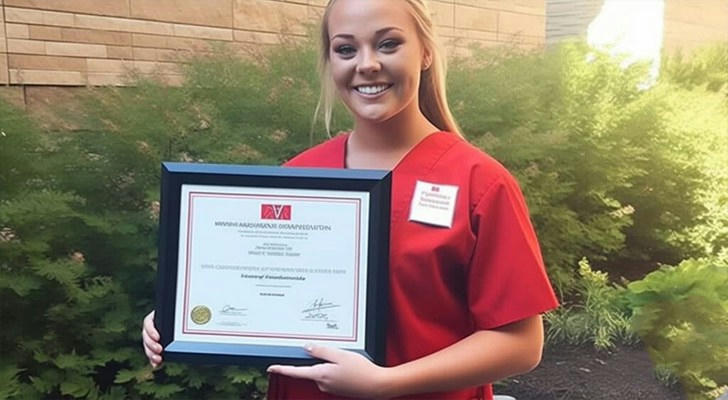Become an LPN in Just Months: How to Enroll in the Right Program!
If you're interested in starting a career in nursing but don’t want to spend years in school, becoming a Licensed Practical Nurse (LPN) is a great option! LPN programs are short, practical, and get you into the healthcare field fast. In this article, we’ll break down what an LPN is, how long the courses take, and how you can choose the right program to get started.

What is an LPN?
An LPN, or Licensed Practical Nurse, provides basic medical care to patients in hospitals, nursing homes, and other healthcare facilities. LPNs work under the supervision of registered nurses (RNs) and doctors. Some of their tasks include:
•Taking vital signs (like blood pressure and temperature)
•Administering medication
•Assisting with patient hygiene
•Dressing wounds
•Communicating with patients and their families about care
LPNs are a key part of any healthcare team, and this career can be both rewarding and stable.
How Long Does It Take to Become an LPN?
One of the best parts of becoming an LPN is how quickly you can start working. Most LPN programs take 12 to 18 months to complete, depending on whether you study full-time or part-time. This makes it one of the quickest ways to enter the nursing field!
After completing the program, you’ll need to pass the NCLEX-PN exam to get licensed. This is a national test that ensures you have the necessary skills to work as an LPN.
How to Choose the Right LPN Program
Finding the right LPN program is important to make sure you’re getting a quality education and setting yourself up for success. Here are a few things to consider when choosing a program:

1. Accreditation
Make sure the program you choose is accredited. This means it meets high educational standards and is recognized by the state nursing board. Without accreditation, you may not be eligible to take the NCLEX-PN exam, which you need to become licensed.
2. Program Length and Flexibility
Consider how long the program is and whether it fits with your schedule. Some programs offer part-time options if you need more flexibility. If you’re able to study full-time, you can finish faster and start working sooner.
3. Cost
LPN programs vary in cost. Some community colleges offer affordable programs, while private institutions might charge more. Be sure to compare tuition fees and ask about financial aid options like grants or scholarships.
4. Clinical Experience
Practical hands-on experience is a key part of LPN training. Check to see what kind of clinical placements are offered and whether you’ll have the opportunity to practice in different healthcare settings, such as hospitals or nursing homes.
5. NCLEX-PN Pass Rates
Look at the program’s pass rate for the NCLEX-PN exam. Schools with high pass rates often provide better preparation for the exam, which is critical for becoming licensed.
Steps to Enroll in an LPN Program

1.Research Schools: Start by looking at LPN programs in your area or online. Make a list of schools that offer accredited programs and meet your needs in terms of cost, location, and schedule.
2.Meet the Requirements: Most LPN programs require a high school diploma or GED. Some may also require entrance exams like the TEAS (Test of Essential Academic Skills). Be sure to check the admissions requirements for each school.
3.Apply: Once you’ve found a few programs you’re interested in, submit your applications. Be sure to include any required documents, like transcripts or exam scores.
4.Get Financial Aid: If you’re worried about the cost, don’t forget to apply for financial aid. Many schools offer grants, scholarships, or payment plans to help you manage tuition fees.
5.Start Your Classes: Once you’re accepted into a program, you’ll begin a mix of classroom learning and hands-on clinical experience. Stay focused and make the most of your time in the program!
Additional Considerations
•Networking Opportunities: While enrolled in an LPN program, take advantage of networking opportunities with instructors and fellow students who may help you secure job placements after graduation.
•Continuing Education: After becoming an LPN, consider pursuing further education such as transitioning into an RN program or specializing in areas like pediatrics or geriatrics for enhanced career prospects.
•Job Outlook: The demand for LPNs is expected to grow due to an aging population requiring more healthcare services. This makes now an excellent time to enter this field.
Conclusion
Becoming an LPN is a fantastic way to kickstart your nursing career in just a short time. With the right program, you’ll be on your way to a stable, fulfilling job in the healthcare field. When choosing an LPN program, make sure it’s accredited, fits your schedule, and provides plenty of clinical experience to help you succeed. Ready to get started? Begin your research today, and you’ll be on your way to becoming an LPN in no time!
